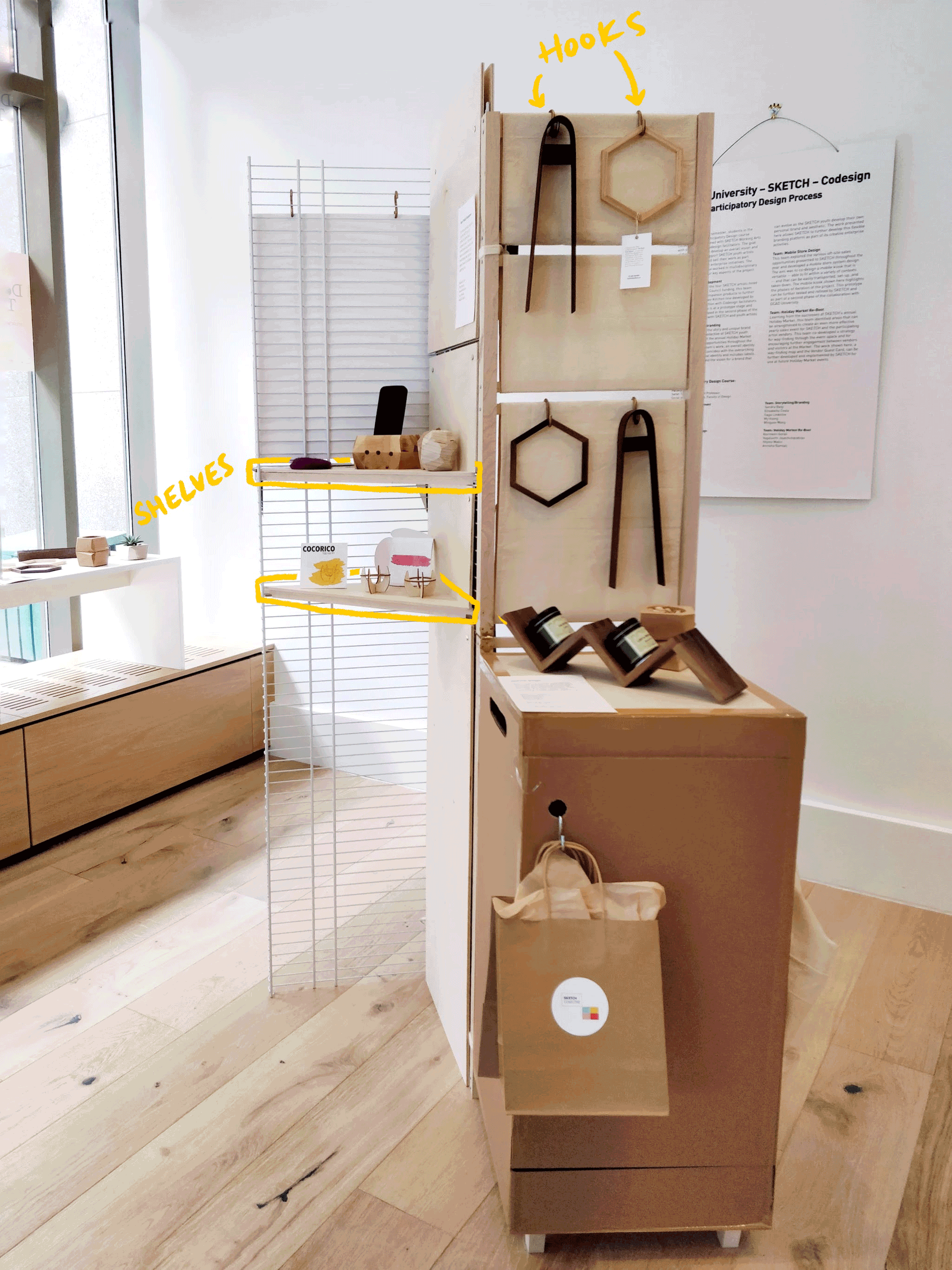
Shop SKETCH
How might we design a compelling mobile shop system that would allow artists at SKETCH to reach off-site customers?
SKETCH Working Arts provides mentorship, facilities and various arts programs to youth living on the margins. We designed and created a portable shop system for the artists at SKETCH who are ready to establish their own businesses selling their work.
By Priscilla Lee, Shaista Amjad, Fatima Riaz, Sylvia Wang
Supervised by Sarah Tranum, Connie Chisholm
Partnered with staff and artists at SKETCH
Starting Off
At our team's first meeting with the staff and artists at SKETCH we wanted to understand: in addition to the practicalities of where the shop system would be used, how it would be used and what it might look like - what value would it bring to SKETCH as an organization and the artists associated with them?
The shop would empower ready - to - be - independent artists to be able to create work for themselves, by facilitating opportunities to support themselves financially, speak about their work, make community connections, and learn how to run a business.


Honing In
After our initial interviews and research, we had amassed an impressive, but perhaps naively optimistic list of what the shop could be and do. So we planned a couple activities to do together with our stakeholders to find out what was important to them.
One was a series of role-playing scenarios using a low-fidelity prototype to better understand what would be most important while the shop was in use. Another was a simple but effective priority map, using open-ended images and follow up questions to understand which pieces were relatively more and less important.
Prototyping & Testing
Make, test, get feedback, apply feedback to the next iteration, and repeat as many times as possible. Although we didn't get to test as many full-sized models as we would've liked, we had several key opportunities. One was the low - fidelity model role playing we did at Artscape, and the other was at SKETCH's annual Holiday Market where we tested the model in a context very close to where it would actually eventually be used. We were also able to test portability and convenience on both public transit and a ridesharing service.

Result: Shop Design
We created a modular system of parts that could be easily fabricated, repaired and modified by the artists and staff at SKETCH.
1. Modularity allows work from a variety of disciplines to be displayed.
2. Wooden frames form the base structure. Height gives the display visibility, the option to add spotlights, and a smaller footprint if space is limited. With a couple hinges in the middle they can be folded in half for easier transport. Fabric ties hold multiple frames together.
3. The wheeled box at the front can be opened to be used as storage, and the top provides a useful surface to display work, to write notes on or package sold items as needed.
4. Fabric panels are removable and lightweight covers for the wooden frame, creating clean backdrops for the artist's work to shine. They are simple to make, and thus customized ones can be made to suit artists' individual brands.
5. Shelves and hooks can be added or removed as needed.

Result: Programming Design
In tandem with the physical shop system, we designed a booklet that included instructions for how to build the different parts, as well as suggestions for workshops to develop the shop itself as well as the artists who will be using it.
Suggested artist workshop activities:
-
Practice setting up and tearing down.
-
Place your work on the display. How would you use the pieces differently from someone else to create an attractive display for your own work?
-
Role play. Pretend you are set up at a market, have someone else come and act as a potential customer. If possible have one more party simply be an observer.
-
As a vendor, how would you approach a potential customer? Pretend to restock items, receive payments, give out business cards etc. Consider how you might use the display to facilitate this actions.
-
As a customer, what about the display attracts you? What puts you off?
-
As an observer, what do you notice about their interactions? Any advice for the vendor?
-
-
Co-design improvements for the design.
-
Example questions to discuss and consider: as a maker, are other materials more accessible to you? As a vendor, are there extra components that you think other vendors would find useful? How might we make it easier to handle when transporting it?
-
